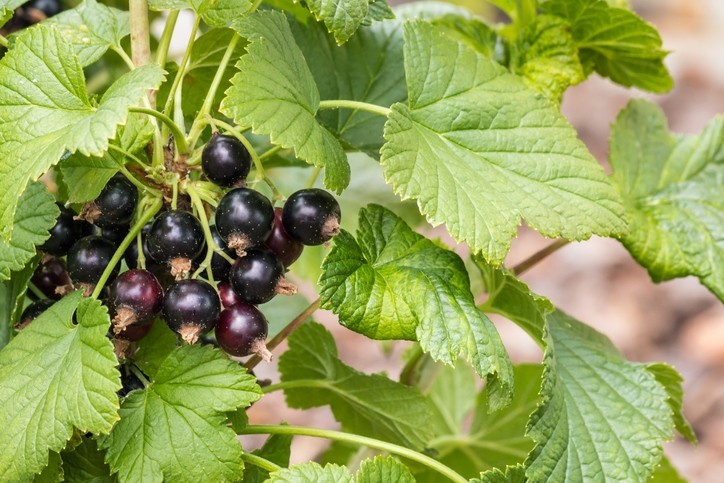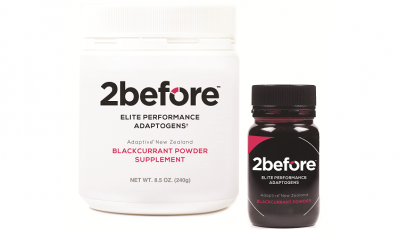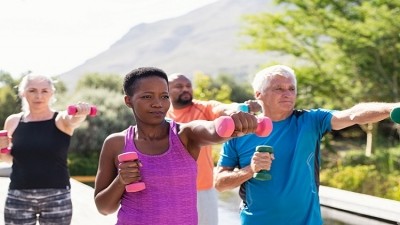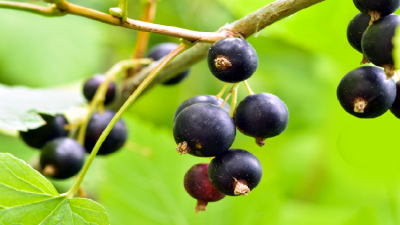Exercise with BAE: Daily consumption of New Zealand blackcurrants promotes recovery

This follows a study from last year by the same researchers, which found a single consumption of a 3.2 mg/kg of BAE one hour before a 30-minute rowing exercise facilitated the recovery from exercise-induced oxidative stress.
In this current study, researchers found extended consumption contributed to the maintenance or even enhancement of cellular antioxidant/anti-inflammatory properties that support exercise recovery.
The findings were published in the Frontiers in Nutrition journal.
Methodology
The study was conducted by researchers at The New Zealand Institute for Plant & Food Research.
Thirty-six healthy individuals between 20 and 60 years old and moderately active were recruited from the Hamilton, Waikato community.
Participants were tasked to record a food diary over the six-week period of the study, and refrain from taking other foods, beverages and dietary supplements rich in anthocyanins and antioxidants.
The blackcurrant anthocyanin extract (BAE) used in the study was obtained from the New Zealand Blackcurrant Co-operative and contained 34% anthocyanins made up of four dominant anthocyanin glycosides (90%): delphinidin-3-O-glucoside, delphinidin-3-O-rutinoside, cyanidin-3-O-glucoside and cyanidin-3-O-rutinoside.
Researchers opted for a dose of BAE (240 mg total anthocyanins or 3.2 mg/kg) which is equivalent to around 48 g of blackcurrant fruit and 14 ml of blackcurrant juice concentrate.
Participants were randomly assigned to either the placebo or BAE study arms (18 participants per treatment arm).
They were tasked to consume two vegetable capsules (BAE or placebo) with 100mL of water and perform a 30-minute rowing exercise at 70% VO2max, one hour later.
Blood samples were collected pre-exercise, immediately after exercise, and after a two-hour recovery. Plasma oxidative stress status was assessed by the concentrations of malondialdehyde (MDA) and plasma oxidative-generating capability: ROS and superoxide (SO).
Saliva samples were collected before the consumption of capsules.
Following this, participants were asked to consume two capsules (BAE or placebo) every morning for the next five weeks.
At the beginning of week six, participants were asked to repeat the timed nutrition-exercise trial they performed on week one.
Plasma oxidative stress
Exercise inevitable increased plasma MDA (oxidative stress) levels in both groups.
However, in week one, the BAE observed significantly lower plasma MDA after a two-hour recovery, compared to the placebo group (p<0.05).
Repeat of the exercise session on week six, revealed that the BAE group showed the same efficacy in reducing post-exercise plasma MDA levels after recovery.
In addition, plasma ROS and SO-generating capability observed significantly lower concentrations in the BAE group after recovery, compared to placebo group (p<0.05 for both).
Repeat of the exercise trial on week six also showed the same desirable effects.
Exercise-induced acute inflammation
The study also measured plasma TNFα, which is a protein in the body known to cause early inflammation events.
At week one, the BAE group observed significantly lower levels of TNFα after recovery, compared to the placebo group (p<0.05). Repeat of this exercise on week six, also reported the same effects.
Immune factors in plasma and saliva
Researchers also observed that a daily consumption of BAE for five weeks caused a significant increased concentration of plasma IL-10 (p<0.05) in week six compared to week one.
IL-10 is an immune modulator that demonstrates both anti-inflammatory and antioxidant properties.
“Since IL-10 is associated with supporting the cell's antioxidant/anti-inflammatory properties, it could be speculated that this increase in IL-10 may have contributed to the enhanced resolution of exercise-induced acute inflammatory response, and to the reduction in plasma ROS-generating capability observed after two-hour of recovery at week 6,” researchers explained.
Salivary mucosal anti-bacterial defense proteins (BD2 and secretory IgA) levels were also higher in week six compared to week one.
IgA is identified as having a protective role in counteracting exercise-induced impairment of mucosal defenses.
Potential functional food
Researchers said these findings support that the long-term consumption of foods rich in anthocyanins.
“Our findings support that the daily consumption of BAE (containing 3.2 mg/kg) for 5 weeks serves to maintain and/or enhance the exercise recovery effectiveness of an acute single consumption of BAE by promoting a beneficial/protective antioxidant/anti-inflammatory cellular environment that facilitates exercise recovery,” researchers said.
“Our data add to the accumulating knowledge of how polyphenolic compounds support health-promoting cellular processes,
“Understanding the interplay between nutritional timing of macronutrients such as plant polyphenolic compounds (e.g., anthocyanins) and exercise to maximise beneficial adaptive cellular events may ultimately enable the design and implementation of nutrition-exercise training strategies that specifically target the desired adaptive ergonomic, performance and human health outcomes.”
Source: Frontiers in Nutrition
https://doi.org/10.3389/fnut.2020.00016
“Daily Consumption of an Anthocyanin-Rich Extract Made From New Zealand Blackcurrants for 5 Weeks Supports Exercise Recovery Through the Management of Oxidative Stress and Inflammation: A Randomized Placebo Controlled Pilot Study”
Authors: Roger D. Hurst, et al.


















